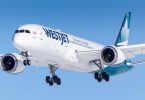In testimony before the United States House of Representatives Aviation Subcommittee yesterday, Regional Airline Association president Roger Cohen told congress that the industry has embarked upon a Strategic Safety Initiative that will push for new advances in aviation safety. The multi-part initiative will look at human factors that have led to accidents in order to avoid incidents in the future. The program will bring together safety experts and calls for several measures in partnership with labor, management, regulators, congress, and other industry stakeholders.
“Flying is the safest form of travel, and we want to keep it that way,” said Cohen. “We need to take bold action to address every single issue that could possibly affect the culture of safety that is the fundamental cornerstone of the aviation industry.”
RAA’s Strategic Safety Initiative has four elements:
1) Safety Board – RAA is bringing together safety professionals to review procedures and address issues that can even be perceived as a contributing factor to an accident.
2) Fatigue Study – The association will commission an independent and scientific study, analyzing the impact of fatigue and other human factors that may affect pilot performance.
3) Fatigue Awareness Management Program – RAA will create a fatigue awareness management program for use by its member airlines.
4) Industry-Government Partnership – The industry is reaching out in partnership with congress, across the government, and to fellow stakeholders in labor and throughout the aviation industry to explore the full range of issues, which could help improve safety and prevent future accidents. Among those issues:
– Establish a single, integrated FAA database of pilot records
– Extend the period for background checks from 5 to 10 years
– Conduct random fatigue testing
– Examine commuting
– Analyze information from cockpit voice recorders in settings other than accident investigations
– Mine check ride data for trends
“We need to take the next steps into the new frontier of information management to better track trends and analyze human factors,” said Mr. Cohen.” This initiative will look for more ways we, as an industry, can reach our goal of zero accidents.”
This initiative is in addition to stringent training programs regional airlines already have in place. These include nine different FAA and industry approved safety programs such as FOQA, ASAP, ASIAS, LOSA, DOD, IOSA, AQP, VDRP, and ATOS. In addition, as a common practice, the industry tests pilots every 6 or 9 months on critical skills through check rides. Check rides are pass/fail exams the pilots must successfully complete in order to fly. When pilots take these check rides they must demonstrate 100 percent proficiency. This goes above and beyond what is required by the FAA. In addition to the safety programs, member airlines also institute a variety of training programs, they follow stringent hiring practices, have fatigue management, and maintenance programs in place.





















